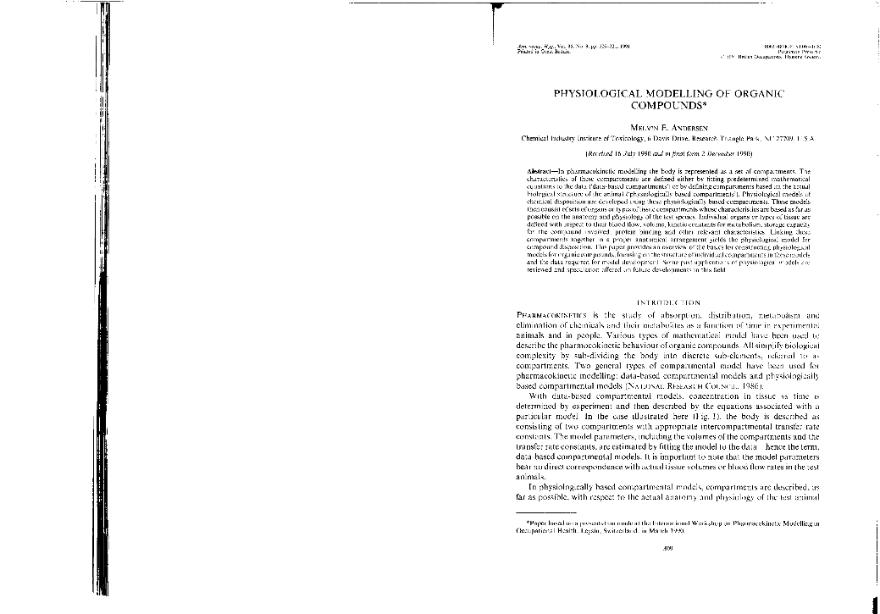Physiological modelling of organic compounds

Contenido multimedia no disponible por derechos de autor o por acceso restringido. Contacte con la institución para más información.
| Tag | 1 | 2 | Valor |
|---|---|---|---|
| LDR | 00000nab a2200000 i 4500 | ||
| 001 | MAP20071017873 | ||
| 003 | MAP | ||
| 005 | 20080418115224.0 | ||
| 007 | hzruuu---uuuu | ||
| 008 | 940311e19910601gbr|||| | |00010|eng d | ||
| 035 | $a6800003066 | ||
| 040 | $aMAP$bspa | ||
| 084 | $a872 | ||
| 100 | 1 | $0MAPA20080236816$aAndersen, Melvin E. | |
| 245 | 1 | 0 | $aPhysiological modelling of organic compounds$cMelvin E. Andersen |
| 520 | $aVarious types of mathematical model have been used to describe the pharmacokinetic behaviour of organic compounds. This present paper examines the mathematical structure and biological assumptions implicit in the use of physiological models. In addition, it discusses methods used to obtain parameters specific to particular compounds for various classes of organic compounds and the challenges involved in extending this modelling approach to an even wider variety of compounds present in occupational environments | ||
| 650 | 1 | 1 | $0MAPA20080585679$aHigiene industrial |
| 650 | 1 | 1 | $0MAPA20080605278$aContaminantes químicos |
| 650 | 1 | 1 | $0MAPA20080559427$aMetabolitos |
| 650 | 1 | 1 | $0MAPA20080554392$aFisiología |
| 740 | 4 | $aThe Annals of occupational hygiene | |
| 773 | 0 | $tThe Annals of occupational hygiene$dOxford [etc.]$gnº 3, June 1991 ; p. 309-321 |

